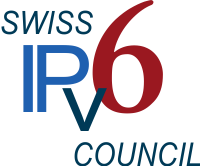RFC 7123 – Security Implications of IPv6 on IPv4 Networks
What are the security issues around IPv6 support and IPv6 transition mechanisms on an IPv4-only network? Could the unplanned and perhaps even unknown support of IPv6 by operating systems introduce additional security concerns into an enterprise network?
In an Informational RFC 7123 published in February 2014, Fernando Gont and Will Liu explore the security implications of native IPv6 support and also of IPv6 tunneling mechanisms. They walk through the different transition mechanisms, explain potential security issues and outline ways to potentially mitigate the security concerns. The document is available at:
http://www.rfc-editor.org/info/rfc7123
The introduction of the document gives a taste of what the rest of the document covers:
Most general-purpose operating systems implement and enable native IPv6 [RFC2460] support and a number of transition/coexistence technologies by default. Support of IPv6 by all nodes is intended to become best current practice [RFC6540]. Some enterprise networks might, however, choose to delay active use of IPv6.
This document describes operational practices to prevent security exposure in enterprise networks resulting from unplanned use of IPv6 on such networks. This document is only applicable to enterprise networks: networks where the network operator is not providing a general-purpose internet, but rather a business-specific network. The solutions proposed here are not practical for home networks, nor are they appropriate for provider networks such as ISPs, mobile providers, WiFi hotspot providers, or any other public internet service.
In scenarios in which IPv6-enabled devices are deployed on enterprise networks that are intended to be IPv4-only, native IPv6 support and/or IPv6 transition/coexistence technologies could be leveraged by local or remote attackers for a number of (illegitimate) purposes. For example,
- A Network Intrusion Detection System (NIDS) might be prepared to detect attack patterns for IPv4 traffic, but might be unable to detect the same attack patterns when a transition/coexistence technology is leveraged for that purpose.
- An IPv4 firewall might enforce a specific security policy in IPv4, but might be unable to enforce the same policy in IPv6.
- A NIDS or firewall might support both IPv4 and IPv6, but might not be configured to enforce on IPv6 traffic the same controls/policies it enforces on IPv4 traffic.
- Some transition/coexistence mechanisms could cause an internal host with otherwise limited IPv4 connectivity to become globally reachable over IPv6, therefore resulting in increased (and possibly unexpected) host exposure.
- IPv6 support could, either inadvertently or as a result of a deliberate attack, result in Virtual Private Network (VPN) traffic leaks if IPv6-unaware VPN software is employed by dual-stacked hosts.
In general, most of the aforementioned security implications can be mitigated by enforcing security controls on native IPv6 traffic and on IPv4-tunneled IPv6 traffic. Among such controls, is the enforcement of filtering policies to block undesirable traffic. While IPv6 widespread/global IPv6 deployment has been slower than expected, it is nevertheless happening; and thus, filtering IPv6 traffic (whether native or transition/coexistence) to mitigate IPv6 security implications on IPv4 networks should (generally) only be considered as a temporary measure until IPv6 is deployed.
- Anker 575 USB-C Docking Station (13-in-1), 85W für Laptops
- Perfect Server Hardware for Virtualization | Proxmox | pve-05
- Pioneer Blu-Ray/BD/DVD/CD Reader/writer USB 3.0 BDR-XD07TB | WORKS OK with Debian 11
- NOT WORKING WITH DEBIAN 11 | Dockingstation | IcyBox 14-in-1 USB Type-C | IB-DK2262AC
- How to remove systemd services
- Laptop | Lenovo | Thinkpad E15 Gen3 AMD
- Laptop | Lenovo | LENOVO-IDEA IdeaPad 3 15IGL05 Notebook (15.6 ", 128 GB SSD, Business Black)
- D. Klimo | Kent monoblocks
- TTN Mapper
- LILYGO TTGO T-Beam V1.1 ESP32 LoRa 868Mhz GPS 18650 Board
- LILYGO® TTGO T-Beam 868MHz -> The Things Network (TTN/TTS) -> Karte | Infos und Video bei Alex (www.aeq-web.com)
- Kabelfarben 3.3V, 5V, 12V, 230V | Durchmesser
- 01 Digi-Bee Stand01 Wetter
- Solar Panel | 6V 3W Solar Panel JY D145x145
- TTGO LoRa32 V2.1_1.6 version 433/868/915Mhz ESP32 LoRa OLED 0.96 Inch SD Card Bluetooth WIFI wireless Module ESP-32 SMA
- -pve-04 | Disk SSD and HDD
- DISK SSD | 1 TB | Samsung SSD 870 EVO 1TB - 1TB
- NanoVNA V2
- CubeSat | antennas |
- KoZo_GS3_433MHz
- tinyGS - shortcut what it means
- TinyGS Telegram community | published Links
- Wolfgang W. Osterhage (Springer Verlag Sachbuch 2021): Die Geschichte der Raumfahrt | (gefundene Fehler)
- ucs Univention some commands
- SMA-Stecker / SMA-Buchse

 In 7-Zip ermöglicht eine Sicherheitslücke, den Mark-of-the-Web-Schutzmechanismus auszuhebeln und so Code auszuführen. Ein Update ist verfügbar.
In 7-Zip ermöglicht eine Sicherheitslücke, den Mark-of-the-Web-Schutzmechanismus auszuhebeln und so Code auszuführen. Ein Update ist verfügbar.
 Im Webbrowser Brave können Angreifer eine Sicherheitslücke missbrauchen, die zur falschen Anzeige einer Download-Quelle führt.
Im Webbrowser Brave können Angreifer eine Sicherheitslücke missbrauchen, die zur falschen Anzeige einer Download-Quelle führt.








